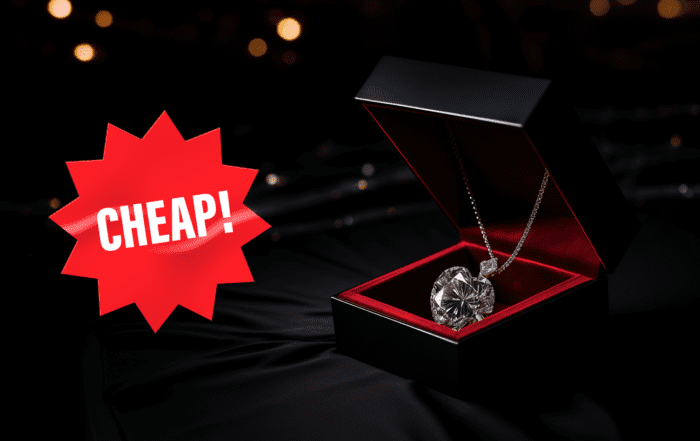Influencers: Media with Feelings and Personality
Back in 2016, the influencer marketing industry was worth $1,7 billion. In 2022 this number rose to $16.4 billion. The official numbers for 2023 are not out yet, but expectations move around $21.2 billion. This exponential growth is expected to continue globally and its effect is also reflected regionally, significantly affecting the Macedonian market as well. As you have probably noticed, the influencer scene in Macedonia has been quite active in the past year.
The context behind this is a massive change in the target audiences for whom traditional media are no longer the primary choice for information and entertainment. A decade ago, social media mainly attracted younger audiences, and now the bar has moved higher: Internet and social media are the first choice for all generations under 50. Besides that, many studies have shown that people trust “real people”, even strangers, more than they trust brands’ official channels. So, it comes as no surprise that brands increasingly include influencers in their marketing strategies and allocate bigger budgets to them each year.
Making the right choice: How to Select Your Influencers?
Social media influencers are paid media. However, having a high number of followers may not be a good enough reason for partnering. That’s why we spend hours going over the nitty-gritty details about the influencers’ media KPIs – their organic reach, engagement rate, audience demographics and relevancy, authenticity and integrity. This is not just technical data but is easily variable and can be affected by many factors. Moreover, these are media with feelings, character, and specific behavior both online and offline, and their personal values must be aligned with the brand’s values and objectives. Most often, the choice is based on a mix of a few criteria:
- Influencers’ KPIs
Media KPIs, such as organic reach, video views, engagement rate, audience demographic structure, etc. are a good place to start. Yes, the number of followers is also important, but not crucial. Fake followers don’t mean anything, not only because software can scan the influencer’s profile but also because they negatively affect the rest of the metrics. For example, more fake followers mean a lower engagement rate and a lower percentage of local and relevant audiences.
- Influencers’ Authenticity
Content creators who can create narration with a developed personal style and creativity focused on a niche target are highly appreciated. On the other hand, for self-centered profiles, influencers who try to sell themselves only through provocative photos have no perspective in the long run.
- Influencers’ Integrity
Influencers who turn their profiles into supermarkets, with too many brands, without their organic content, rarely influence anyone. In the end, the goal of the companies is to fit the brand into the influencer’s lifestyle, not to hang on their profile like banners on web media. The outcome won’t be good if the influencer fakes that they are a vegan and promotes healthy products while eating burgers behind the camera. If someone sees that person and posts a photo of them eating the burger, it will affect both their reputation and the brand’s.
- Influencers’ Relevancy
Personal values aligned with the brand’s values are a must. Generally, each brand has its own criteria, but the common thing for all is that no one wants to relate their brand with people prone to scandals or questionable values.
Campaigning with Influencers: Measuring the results
Once you have chosen the right influencers, they need to tell your story. You give them the freedom to be true to themselves, but they need to make sure they understand the brief completely. Even fantastic ideas can’t be used sometimes if they don’t fit the campaign’s brief. Experience has shown that the best outcome comes from non-standard campaign formats, a lot of interaction between the involved influencers, and engagement with the audience.
The benchmarks must be set from the start when planning your campaign. Besides the buzz on social media, you have to decide what KPIs are essential for the campaign’s goals. Sometimes, you want to spread a message, and the reach is most important — other times, you want to provoke engagement, comments, shares, and engagement rate. Likes, for example, are insignificant metrics if your goal is to drive sales or app downloads. Video views and saves may be vital if you are a cooking influencer posting recipes.
When assessing the results, it is essential to know the algorithm of the software you use and how it calculates the engagement rate, how it measures video views, etc. With suitable content, the right influencer can form the general sentiment of the campaign and the content distributed to official channels. The other influencers in the campaign also affect each of them separately. The narrative behind the campaign and its formats affects the success of the influencer content, too. Every video is part of the whole story, not just a subject per se.
Influencers also grow through partnerships with big brands, and sometimes it’s better to invest in a smaller, niche profile aligned with the brand, than spend your budget on macro influencers who are not entirely in line with the brand’s values, already promote too many other brands, or bring a more significant risk to the brand safety.
If reading all this is giving you a headache and you want someone to take care of everything for you and your brand, we got you covered. You can have a look at our all-encompassing marketing solutions & services and make your judgement. On our website, we have posted some of our most successful projects that might be of your interest when you are in the process of making a decision. After you decide what you think you want – contact us and we will take care of every detail you can and cannot conceive right now, so the worries will remain on our side.
DOs and DON’Ts for influencers
- Know your target and stay true to your style.
People started following you for a reason before you considered yourself an influencer. Don’t disappoint them by trying to reach a new audience. If your audience is young, dominantly under 24, selling them business suits is useless. Growing up with the audience is something else.
- Find your niche.
If you are a fashion blogger/influencer, people will hardly follow you for your cooking recipes. Or, if you are a cooking influencer, your KPIs will drop if you post a fashion video.
- Don’t buy fake followers, and don’t photoshop statistics.
We value your faithful niche followers more than the fake ones purchased from a bot farm from the other side of the world. Fake followers will decrease your engagement parameters, and all software detects them. Photoshopped statistics are alarming for your reputation, and you can be easily caught in a lie.
- Don’t be only an observer on your profile.
You posted your content, and now the job is done. Nooot! Interact with the comments, say something to join the conversation, and continue the story.
- Remember your organic content.
No matter how busy your schedule is, find time for it. Otherwise, you risk losing followers and potential partnerships, as people coming to your profile in the first place want to see the content you make when not paid for it.
- Don’t copy someone else’s idea.
No matter how great it is, it is already seen. Following a trend is one thing, while copying does not add value to your reputation.
- Give the brand the attention it pays for.
This applies to the quality of the content but also to posting. If you already have 15 active stories, how suitable is it to post a story from your brand partner next? If you have signed a contract for a professional reel, don’t improvise with your smartphone and with content that took 30 seconds and only one take to shoot. It will affect the longevity of your partnership for sure.
- Don’t boost the content on your own.
You don’t know the exact target and you will present distorted KPIs in the end. You are paid for the organic distribution, and whether a post should be amplified is a decision made by those who hire you.
Written by Biserka Velkovska Blazheva


